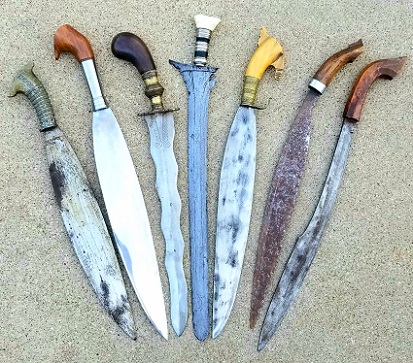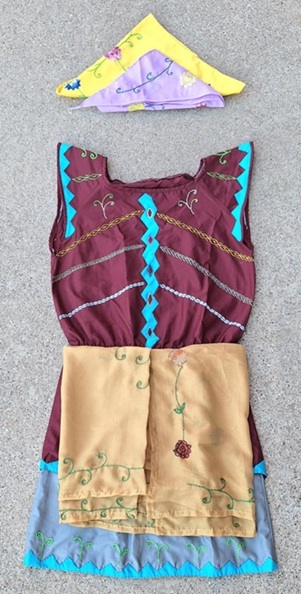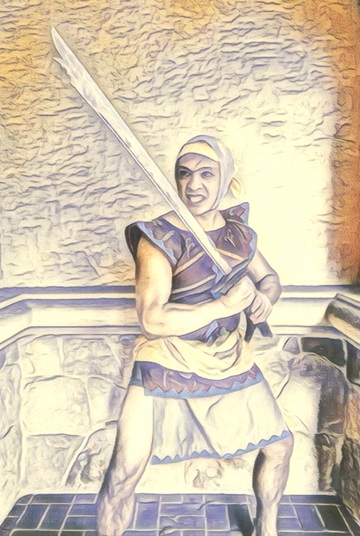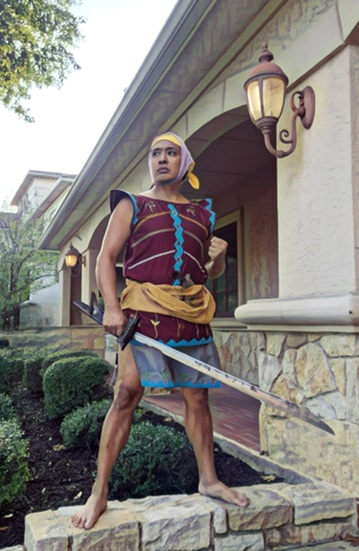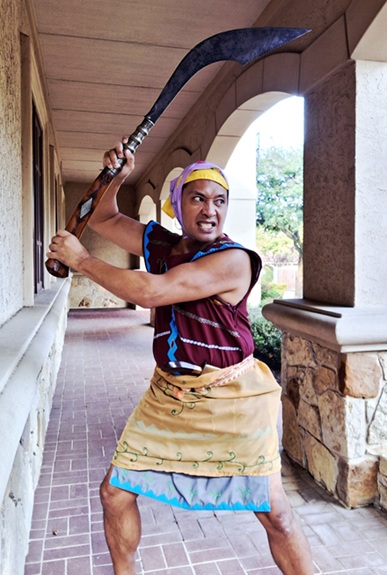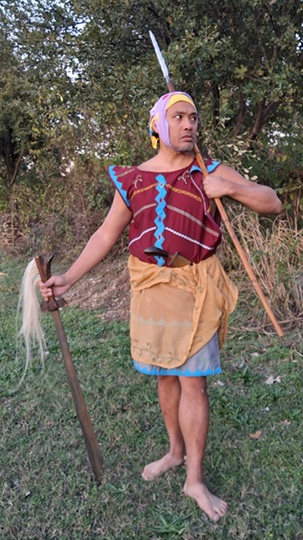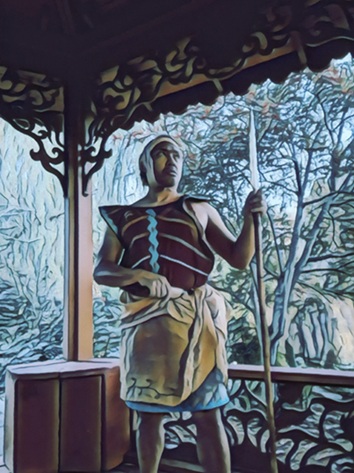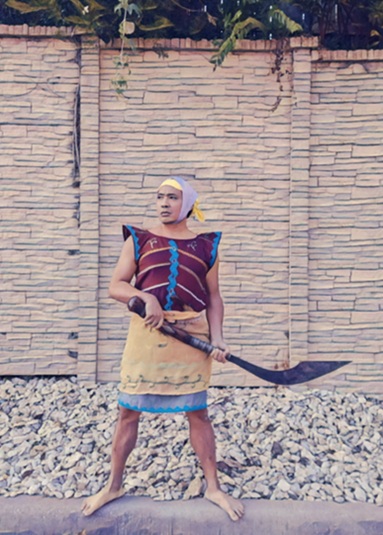Subject: pirate
Culture: Iranun and other Moro peoples
Setting: piracy, Southeast Asia mid-18th - late 19thc
Evolution:
Context (Event Photos, Primary Sources, Secondary Sources, Field Notes)
* Warren 2002 p53-54
"The Iranun burst quite suddenly into Southeast Asian history in the second half of the eighteenth century with a series of terrifying raids and attacks on the coasts and shipping of the Philippines, the straits of Malacca and the islands beyond Sulawesi. Their primary targets were unprotected coastal settlements and sailing boats that travelled throughout Southeast Asia bringing valuable commodities from China and the West back to the most remote parts of the archipelago. Many of these marauders were sponsored by rulers from the trading states of Cotabato, Sulu, Siak, and Sambas. They were soon described as 'Lanun' or 'Illanoon'—'pirates'—by those who suffered their depredations or either travelled with or hunted them and wrote about their widespread impact on the Southeast Asian world.
"It is estimated that during the last quarter of this century (1774–1798) of maritime raiding and conflict against the Dutch and Spanish, between 100 and 200 seaworthy raiding prahus set out from the Mindanao-Sulu area each year. The sheer size of the vessels—the largest joanga measuring upward of 130 feet in length—and the scale of the expeditions dwarfed most previous efforts, marking a significant departure in the naval strategy of Malay maritime raiding as it had been traditionally understood. The Iranun were far more than mere 'pirates' or brigands. The colonial powers and precolonial Malay trading states had to reckon with a dominant force in their own right; a force that was capable of inflicting major defeats on the Spanish and Dutch and toppling local kingdoms. The huge numbers of these skilled sea raiders and slavers that the sultanate of Sulu could mobilize during the heyday of the China trade would henceforth have a profound impact upon Southeast Asia's history."
* McKenna 1998 p74-75
"A key element in the maritime orientation of the Magindanao Sultanate was its relationship with the Iranun populations that resided within its territory. European accounts beginning in the mid-eighteenth century identify the Iranun as specialized maritime raiders who channeled large amounts of externally acquired wealth -- in the form of slaves, plunder, and occasionally external tribute -- back into the sultanate. Swift Iranun warships set out south from Ilana Bay to harry coastal villages, merchant vessels, and Dutch settlements in Sulawesi (the Celebes) and Maluku (the Moluccas). Larger Iranun raids were directed against Spanish territories in the Philippines. The coastal towns of southern Luzon and the Visayas were the victims of persistent, large-scale attacks from 'Moro' sea raiders. Captives were sold externally, usually to Bugis or Brunei slave traders, or internally along the Pulangi River. Spaniards or other prominent captives were usually allowed to redeem themselves by ransom immediately after their seizure.
"The Iranun occupied an important niche in the socioeconomic system of the precolonial Cotabato Basin. They formed autonomous coastal communities headed by datus or petty sultans. Although living in close proximity to the Magindanao Sultanate and often aligned with it, the Iranun were never incorporated into the sultanate as subjects, and they assiduously guarded their political independence. When allied with the downriver sultan, the Iranun provided him with very significant economic and political support. The internal circulation of the wealth seized externally by Iranun raiders was also a vital component of the economic prosperity of the Magindanao Sultanate."
* Konstam 1999 p178-179
"Of all the pirate groups in the Indonesian archipelago, the most feared were the Ilanun pirates of the Philippines and the Balanini pirates of Sulu, northeast of Borneo. The Ilanun pirates not only plagued the waters of the Philippines but also raided far out into the South China Sea. Early observers, including the buccaneer William Dampier, described the Ilanun people as being peaceable, so their reliance on piracy must have developed during the 18th century. ...
"Ilanun raids were often designed to gather slaves, which were then traded in the markets of Sumatra and Java. These large-scale raids were augmented by attacks on Spanish shipping around Manila, and the occasional foray against passing Dutch and British shipping. Like many Indonesian pirates, they used prahus, shallow-drafted canoes rowed by slaves.
* Warren 2002 p146
"The Samal Balangingi, who, as late as 1838, were often mistakenly confused with the Iranun, were a highly-organized, extremely expert slave raiding group, regional in scope, with significant resources in ships, munitions, capital, especially slaves, and contacts. The Balangingi Samal lived, along with Iranun and other Samal-speaking groups, in a dozen or more villages and fortified settlements scattered along the southern Mindanao coast, the southern shore of Basilan, and on the islands of the Samalese cluster of which Balangingi was dominant. As Sulu's trade with China and the West expanded at the end of the eighteenth century, Tausog datus increasingly retained neighboring groups of Samal seafarers as slave raiders. From Balangingi and related settlements on other islands, Samal-speakers voyaged great distances; they swept the coasts from Luzon to Brunei and from Singapore to Menado, capturing slaves. ... From that period [late 1830s] the ethnic label, 'Balangingi,' began to supersede 'Illanun' in the European literature as synonymous with 'pirate.' The Balangingi Samal seem to have acquired ethnic distinction as 'notorious pirates' only because they specialized in maritime slave raiding and incorporated an incredible number of non-Samal peoples into their society."
* McKenna 1998 p31
"[...] For at least 150 years prior to the inception of American colonial rule at the turn of the century, they specialized as seagoing marauders. The Iranun raided throughout island Southeast Asia, from the Celebes in the south to Luzon in the north and as far west as the Straits of Malacca, attacking merchant shipping and coastal settlements in search of slaves and plunder."
* Warren 2002 p56
"In the second half of the eighteenth century many Philippine ports, towns, shipyards, and monasteries were not adequately defended while others were totally defenseless. From the mid-1750s onward, the scale, ferocity and unexpected nature of the initial wave of Iranun attacks were deeply disturbing. Thousands of Filipinos perished or were seized as captives; the more so as the Iranun were Muslims and recognized none of the accepted conventions and taboos that were meant to protect the property and personnel of the Catholic Church in times of war between Christians.... This terrifying period of Iranun slave raiding activity, which lasted more than 70 years from roughly 1752 to 1832, severely hampered the overall social and material well-being and growth of the Philippine island world and the colonial state."
* Singapore and Malaysia 1996 p310
"In the Sulu Sea, memories of [Ilanun] piracy are still fresh. When early European traders came to this region, they found the major rivers uninhabited as far as 40 miles from the coast. Riverside farmers, tired of having each year's harvest robbed from them by force of arms, fled into the more inaccessible highlands."
* Wallace 1890 p261 (describing Batchian, Ternate)
"Whenever I asked the reason why no one goes to live in them [coastal huts], the answer always was, 'For fear of the Magindano pirates.' [NOTE: probably referring to the Iranun pirates' erstwhile association with Magindanao; see McKenna 1998 p74-75 above.] Every year these scourges of the Archipelago wander in one direction or another, making their rendezvous on some uninhabited island, and carrying devastation to all the small settlements around; robbing, destroying, killing, or taking captive all they meet with. Their long well-manned praus escape from the pursuit of any sailing vessel by pulling away right in the wind's eye, and the warning smoke of a steamer generally enables them to hide in some shallow bay, or narrow river, or forest-covered inlet, till the danger is passed. The only effectual way to put a stop to their depredations would be to attack them in their strongholds and villages, and compel them to give up piracy, and submit to strict surveillance. Sir James Brooke did this with the pirates of the north-west coast of Borneo, and deserves the thanks of the whole population of the Archipelago for having rid them of half their enemies."
Costume
* Macaraeg 2009 p44-45
"[P]uede deducirse mucho de las posteriores fuentes moras, trabajos literarios y de la comparación con otros piratas de la esfera del sudeste de Asia. Un grabado de madera de 1848 musetra un barco prahu iranun montado con cañones y su tripulación vitiendo pantalones, blusas, chalecos, sarongs y turbantes -- mas o menos comparables a la vestimenta de otros marineros de la región. Se observan varias lanzas y al menos un alfanje (probablemente un kris, metido dentro de la cintura de un pirata). Un litografía de la misma fuente muestra a un 'jefe malayo' de Jolo ataviado de forma similar, con dos krisses mostrados claramente y metidos, nuevamente, en la cintura. Este pirata, a diferencia de los otros, no viste blusa y pantalones, sino que únicamente lleva una camisa sin mangas y un sarong con su turbante. El y varios de los piratas prahu, en contraste con la ilustración del jefe malayo, son mostrados con un trozo de paño anudado a modo de correa sobre el turbante; esto podría ser para asegurar un pequeño casco o gorra armada no visible claramente en el material gráfico." [references omitted]
* Hamilton ed. 1998 p138 (Ruurdje Laarhoven, "A passion for plaids: A historical consideration of Maguindanao textiles" p132-153)
"There are now settlements of Iranun in Borneo, the Sulu Archipelago, and among the Maguindanao and Maranao, but this diaspora has not received much attention from scholars, and little is known about the Iranun people. It has been observed that when they live in an area that is predominantly Maranao, they weave and wear Maranao-style clothing. If their Maguindanao kin surround them, however, they adapt their weaving practices and cloth patterns to conform to Maguindanao aesthetic values. It has been suggested, however, that the Maguindanao were influenced in their weaving designs and techniques by the Iranun."
Guns
* Warren 2002 p242
"The [Iranun lanong or joanga] crew ... were heavily armed with muskets, a good number of pikes and lances (or bamboos, the point of which was blackened in a fire), kampilans and kris."
Swords (Bangkung, Barong, Kalis/Kris, Kampilan, Panabas, Pira)
* Draeger/Smith 1969 p186
"Bladed weapons abound, especially in Moroland, in the Sulu Archipelago. Each weapon is not necessarily accompanied by an organized system of fighting skills but rather is used to suit individual tastes and requirements. Common Moro knife weapons include: the gunong, kalis, barong, kampilan, laring, gayang, banjal, punal, pira, utak, panabas, bangkcon, and the lahot. ... The bladed-weapon was the core weapon; the kris, bolo, and the balaraw (a dagger-bladed knife), the standard types."
